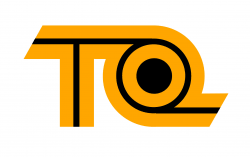Title Page
-
Report No.
-
Person In Charge
-
Client / Site
-
Conducted on
-
Prepared by
-
Location
INTRODUCTION
-
Definition-
High: High risk/priority which requires Immediate Action to solve the issue.
Moderate: Moderate risk/priority which requires a planned approach to solve the issue.
Safe: Safe and maintain the good practices.
None: Not Applicable or Not Available during the inspection.
Phase 2- The corrective action for the non- compliance should be planned and accomplished in the systematic manner. The overall compliance of Phase 2 will not be measured during the year-end performance review for Year 2019.
1. TOOLS & EQUIPMENT (PART 2)
-
1.1 Is the provision of floor jack, transmission jack, jack stand, engine crane, chain block, tyre dolly, creepers sufficient and the equipment are maintained in good condition (hydraulic oil, hook, chains, safety latch, wheels, lifting belt, etc.)?
-
1.2 Are all the air hoses free of air leaking?
-
1.3 Are all the air guns maintained in good working condition?
-
1.4 Are the grinder(s), cutter(s), driller(s) and disc skimmer maintained in good working condition and rotating parts properly guarded?<br>
-
1.5 Is the provision of hand tools (hammer, spanner, copper hammer, wrench, etc.) sufficient and in good condition?
-
1.6 Is the tool-box in good condition and not blocking the passageway/driveway?
-
Updates (Corrective Action)
-
Photo (Corrective Action)
-
Comment (* filled up by EHS upon the review of report)
2. ENVIRONMENTAL ISSUE (PART 2)
-
2.1 Are the waste information cards available and kept properly?
-
2.2 Is the valid waste contractor license printed out and kept properly?
-
2.3 Is the written declaration/notification for spray booth available? (For MRC only)
-
2.4 Is the air sampling report for spray booth available? (For MRC only)
-
2.5 Is the spray booth well maintained and maintenance record is available? (For MRC only)
-
Updates (Corrective Action)
-
Photo (Corrective Action)
-
Comment (* filled up by EHS upon the review of report)
3. EMERGENCY RESPONSE (PART 2)
-
3.1 Are the emergency light and exits sign lit properly?
-
3.2 Are the emergency exit doors accessible and free from obstacles?
-
3.3 Are the evacuation plan and emergency contact number updated and displayed at customer lounge, office, workshop, mechanic room, parts store and security area?
-
3.4 Are the Emergency Response Team (ERT) established at workshop and well communicated?
-
3.5 Are the ERT members training record kept properly?
-
3.6 Are the firefighting system well maintained and periodic maintenance records are available?
-
Updates (Corrective Action)
-
Photo (Corrective Action)
-
Comment (* filled up by EHS upon the review of report)
4. WORKSHOP STORAGE
-
4.1 Is the oil storage area clean, well ventilated and protected from weather?<br>
-
4.2 Are the oil drums, pails, bottles and cartons arranged and stacked in safe manner?<br>
-
4.3 Is the flammables storage (paint store/mixing room) clean, ventilated and distance away from heat/ignition source?
-
4.4 Is the half-used chemical (battery acid, paint, etc.) being closed and kept on spill containment tray?
-
4.5 Is the reused bottle or jug re-labeled accordingly?
-
4.6 Is the safety data sheet (SDS) available at oil storage/paint storage/battery acid storage?
-
4.7 Is the workshop store (i.e. warranty store, dismantled part store, tools room, scraps store, etc.) clean and free of trip and fall hazard?
-
4.8 Are all the racks in good condition and not overloaded?<br>
-
4.9 Are the drum lifter and trolley provided and in good condition?
-
4.10 Is the stepstool or ladder provided and safe to be used to access the stored material at height?
-
Updates (Corrective Action)
-
Photo (Corrective Action)
-
Comment (* filled up by EHS upon the review of report)
5. PARTS STORE & OFFICE STORE
-
5.1 Is the parts store clean, organized and free of trip and fall hazard?
-
5.2 Are the stored materials at parts store arranged/stacked in safe manner?
-
5.3 Is the office store clean, organized and free of trip and fall hazard?
-
5.4 Are the stored materials at office store arranged/stacked in safe manner?
-
5.5 Is the trolley provided and safe to be used to move/lift the heavy loads?
-
5.6 Is the stepstool or ladder provided and safe to be used to access the stored material at height?
-
5.7 Are the stored materials being kept away from lights and fire detectors?
-
5.8 Are all the racks in good condition and not overloaded?
-
Updates (Corrective Action)
-
Photo (Corrective Action)
-
Comment (* filled up by EHS upon the review of report)
6. COMMON AREA
-
6.1 Are the working bay and store free of food and drink?
-
6.2 Are the customer lounge, reception office, HOW room, office and meeting room clean and organized?
-
6.3 Are the mechanic room, surau, washroom and pantry clean and organized?
-
6.4 Is the water dispenser provided and well maintained?
-
6.5 Are all the floors, passageways and staircase free of slips, trips and falls hazard?
-
6.6 Is the roof/ceiling free of leaking and falling object (e.g. frayed ceiling, frame for lighting, etc.)?
-
6.7 Is the temperature at workplace suitable?
-
6.8 Is the workplace free of opening/unguarded floor or falling from height hazard?
-
Updates (Corrective Action)
-
Photo (Corrective Action)
-
Comment (* filled up by EHS upon the review of report)
7. SIGNAGE
-
7.1 Is the SAFETY FIRST signage displayed visibly at workshop?
-
7.2 Is the NO SMOKING signage displayed visibly at workshop, office and customer lounge?
-
7.3 Is the PPE signage displayed visibly at workshop, battery acid area, spray booth, etc.?
-
7.4 Is the CHEMICAL SAFETY signage displayed visibly at oil store, paint store, scheduled waste store and chemical storage area?
-
7.5 Is the SMOKING AREA signage displayed visibly at smoking area for customer and staffs?
-
7.6 Is the VISITOR SAFETY signage displayed visibly at customer lounge/reception office or entrance of workshop?
-
7.7 Is the ASSEMBLY POINT signage displayed visibly at designated assembly area?
-
7.8 Is the FIRST AID signage displayed visibly to indicate the location of first aid kit?
-
7.9 Is the FIRE EXTINGUISHER signage displayed visibly at all the fire extinguisher?
-
7.10 Is the HIGH VOLTAGE signage displayed visibly at electrical panel?
-
7.11 Is the PUSH & PULL signage displayed visibly at glass door?
-
Updates (Corrective Action)
-
Photo (Corrective Action)
-
Comment (* filled up by EHS upon the review of report)
8. DOCUMENTATION (PART 2)
-
8.1 Is the PPE issuance record available?
-
8.2 Is the fire drill conducted (applicable for workshop equipped with fire detection system) and fire drill report kept in good manner?
-
8.3 Is the periodical maintenance to the equipment (air compressor, forklift, goods lift, overhead crane) being carried out and maintenance records documented?
-
8.4 Are the updated Chemical Register and Safety Data Sheet (SDS) available?
-
Updates (Corrective Action)
-
Photo (Corrective Action)
-
Comment (* filled up by EHS upon the review of report)
9. OTHERS
-
Is there any other non-conformance observed?
-
Photo (Non-conformance)
-
Updates (Corrective Action)
-
Photo (Corrective Action)
-
Comment (* filled up by EHS upon the review of repot)
CONCLUSION/RECOMMENDATION
Conclusion/ Recommendation
-
Very poor EHS MS implementation. Immediate action is required to avoid the disciplinary action taken by the authority.
-
Poor EHS MS implementation. Need to work harder on legal compliance first before move to next level requirements.
-
Moderate EHS MS implementation. A lot of corrective action required.
-
Good EHS MS implementation. Several corrective action required.
-
Excellent EHS MS implementation. Few corrective action required and ready for EHS MS level enhancement.
-
Deadline
Completion
-
Signature








